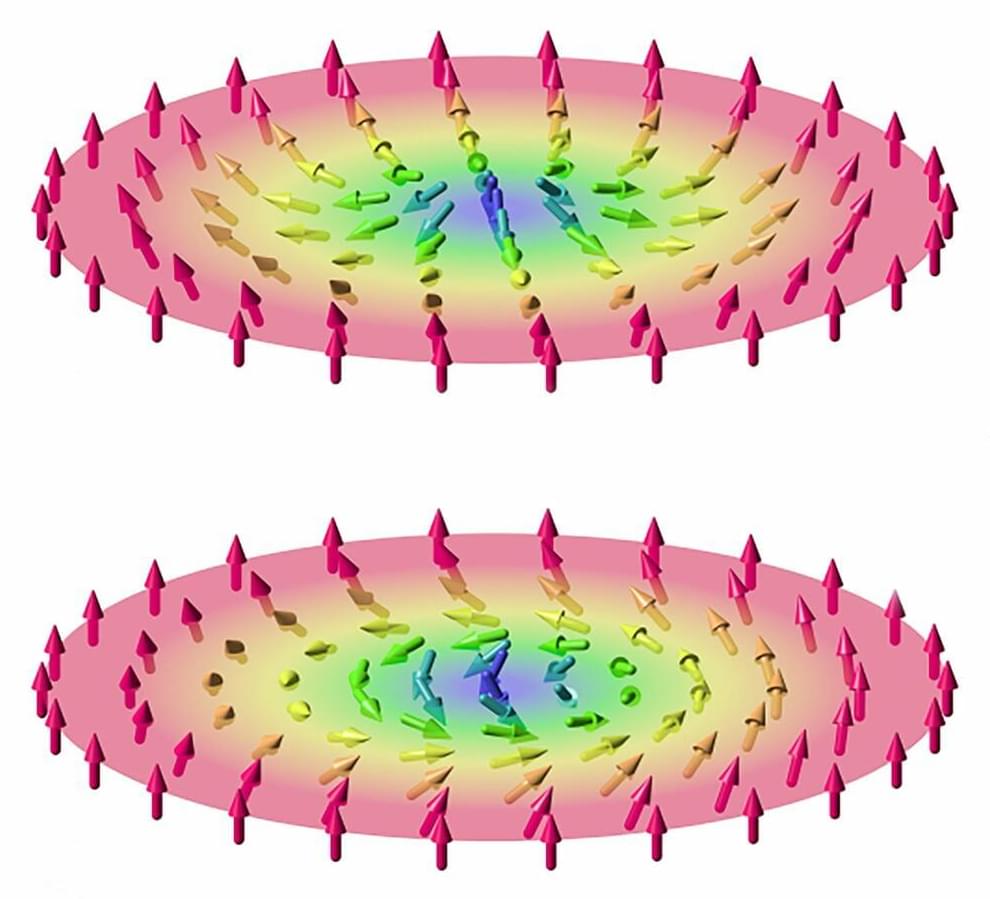Scientists at the National Institute of Standards and Technology (NIST) with colleagues elsewhere have employed neutron imaging and a reconstruction algorithm to reveal for the first time the 3D shapes and dynamics of very small tornado-like atomic magnetic arrangements in bulk materials.
These collective atomic arrangements, called skyrmions—if fully characterized and understood—could be used to process and store information in a densely packed form that uses several orders of magnitude less energy than is typical now.
The conventional, semiconductor-based method of processing information in binary form (on or off, 0 or 1) employs electrical charge states that must be constantly refreshed by current which encounters resistance as it passes through transistors and connectors. That’s the main reason that computers get hot.









Comments are closed.